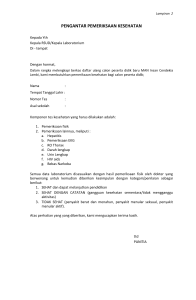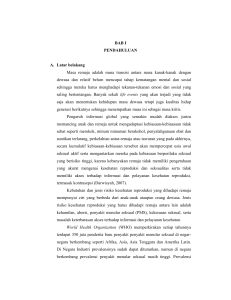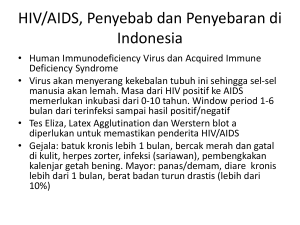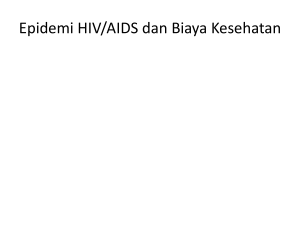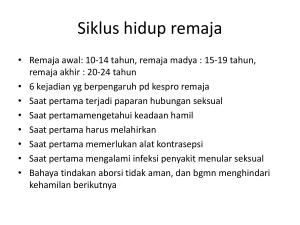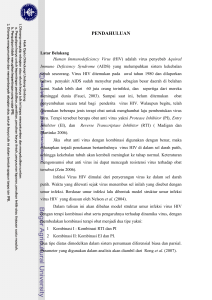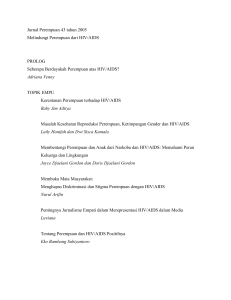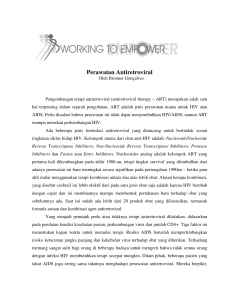ABSTRAK
advertisement
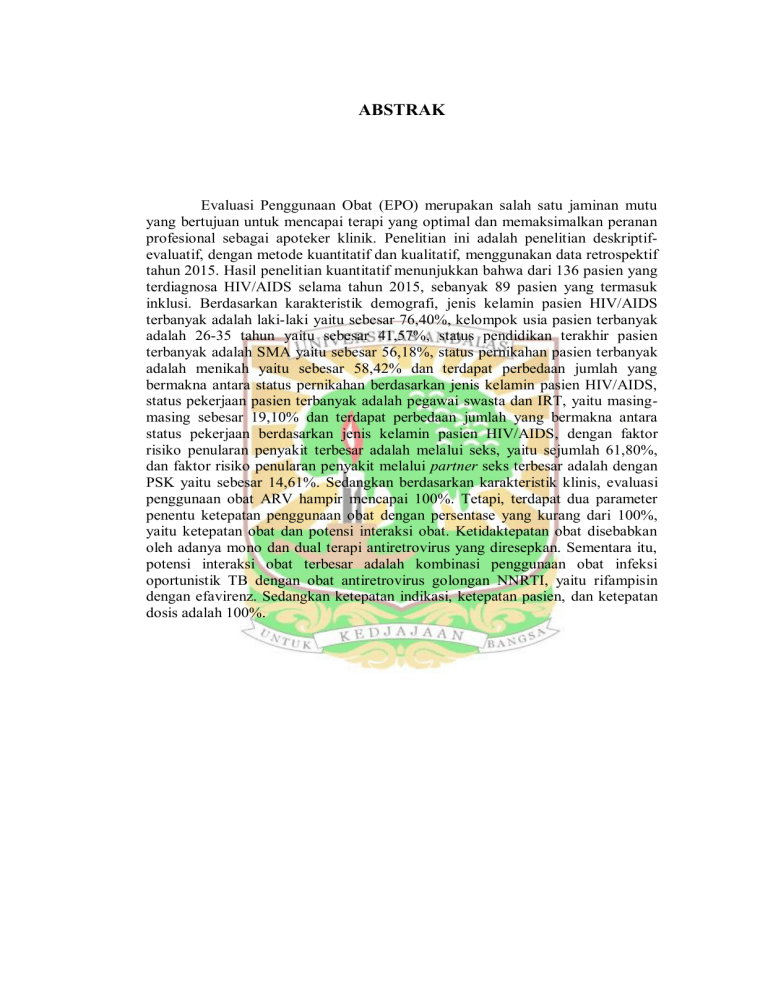
ABSTRAK Evaluasi Penggunaan Obat (EPO) merupakan salah satu jaminan mutu yang bertujuan untuk mencapai terapi yang optimal dan memaksimalkan peranan profesional sebagai apoteker klinik. Penelitian ini adalah penelitian deskriptifevaluatif, dengan metode kuantitatif dan kualitatif, menggunakan data retrospektif tahun 2015. Hasil penelitian kuantitatif menunjukkan bahwa dari 136 pasien yang terdiagnosa HIV/AIDS selama tahun 2015, sebanyak 89 pasien yang termasuk inklusi. Berdasarkan karakteristik demografi, jenis kelamin pasien HIV/AIDS terbanyak adalah laki-laki yaitu sebesar 76,40%, kelompok usia pasien terbanyak adalah 26-35 tahun yaitu sebesar 41,57%, status pendidikan terakhir pasien terbanyak adalah SMA yaitu sebesar 56,18%, status pernikahan pasien terbanyak adalah menikah yaitu sebesar 58,42% dan terdapat perbedaan jumlah yang bermakna antara status pernikahan berdasarkan jenis kelamin pasien HIV/AIDS, status pekerjaan pasien terbanyak adalah pegawai swasta dan IRT, yaitu masingmasing sebesar 19,10% dan terdapat perbedaan jumlah yang bermakna antara status pekerjaan berdasarkan jenis kelamin pasien HIV/AIDS, dengan faktor risiko penularan penyakit terbesar adalah melalui seks, yaitu sejumlah 61,80%, dan faktor risiko penularan penyakit melalui partner seks terbesar adalah dengan PSK yaitu sebesar 14,61%. Sedangkan berdasarkan karakteristik klinis, evaluasi penggunaan obat ARV hampir mencapai 100%. Tetapi, terdapat dua parameter penentu ketepatan penggunaan obat dengan persentase yang kurang dari 100%, yaitu ketepatan obat dan potensi interaksi obat. Ketidaktepatan obat disebabkan oleh adanya mono dan dual terapi antiretrovirus yang diresepkan. Sementara itu, potensi interaksi obat terbesar adalah kombinasi penggunaan obat infeksi oportunistik TB dengan obat antiretrovirus golongan NNRTI, yaitu rifampisin dengan efavirenz. Sedangkan ketepatan indikasi, ketepatan pasien, dan ketepatan dosis adalah 100%. ABSTRACT Evaluation of Drug Use (EPO) is one of quality assurance which aim to achieve optimal therapy and maximize professional role as a clinical pharmacist. This research is descriptive-evaluative, with quantitative and qualitative methods, using retrospective data in 2015. The results of a quantitative study showed that 136 patients were diagnosed with HIV/AIDS during 2015, and total of 89 patients were included inclusions. Based on demographic characteristics, the most patients gender of HIV/AIDS is a man that is equal to 76.40%, the highest patient age group is 26-35 years that is equal to 41.57%, the latest educational status of most patients is Senior High School that is equal to 56.18 %, most patients marital status is married with 58.42% and there are significant differences between the number of marital status by sex of the patient with HIV/AIDS and employment status, most patients are private employes and housewife, ie respectively by 19.10% and there is a significant difference amount of work status by gender HIV/AIDS patients, with the largest risk factors for disease transmission is through sex, the number of 61.80%, and biggest risk factors for disease transmission through sexual partner with prostitute women is 14.61%. While based on clinical characteristics, evaluation of the use of antiretroviral drugs reached almost 100%. However, there are two parameter determining appropriate usage of drugs with a percentage less than 100%, they are inaccuracy of drugs and potential drug interactions. Inaccuracy of drugs caused by mono and dual antiretroviral therapy is prescribed. Meanwhile, the greatest potential for drug interaction is a combination of the use of drugs for opportunistic infections TB with NNRTI class of antiretroviral drugs, are rifampicin with efavirenz. While the accuracy of the indication, accuracy of patient, and accuracy of dose is 100%.
